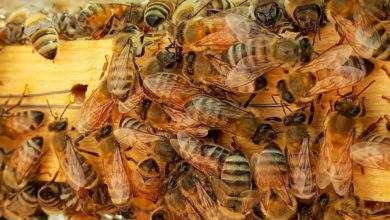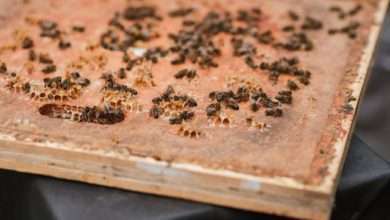Should You Use a Beehive Monitoring System
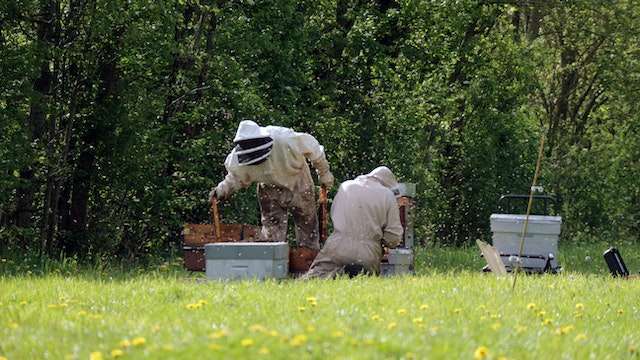
While beekeepers have traditionally managed bee colonies without the use of sensors and data logging, this new technology can provide valuable insights in terms of bee health, hive productivity, and colony behavior. Sensors can be used to monitor air temperature and humidity levels, detect disease and pests, and track the queen and worker bee populations.
In this article, we’re going to take a closer look at why it might be a good idea to use sensors in beekeeping operations and how they can help us better manage our bee colonies.
What Are Bee Colony Sensors?
Bee colony sensors are devices that measure environmental parameters, location, and health metrics from inside the beehive. For example, a temperature and humidity sensor could indicate whether certain conditions in the hive are ideal or should be adjusted to support the bees’ wellbeing.
These sensors may also detect changes in air quality, such as the presence of disease or other pests, or the presence of chemicals such as pesticides or fertilizer. Other sensors may also track the size and location of the colony, including the number of workers and queens, and the percentage of eggs and larvae.
Benefits of Using a Beehive Monitoring System
In recent years, the beekeeping industry has faced numerous challenges due to climate change, pesticide use, and disease outbreaks. In order to overcome these obstacles and ensure the well-being of our valuable pollinators, beekeepers now have access to advanced technology – the Beehive Monitoring System. This innovative system provides numerous benefits, enhancing hive management and ensuring the early detection of potential issues.
Enhanced Hive Management
- Real-time data on hive conditions: With a Beehive Monitoring System, beekeepers can access real-time data on various hive conditions, empowering them to make informed decisions and take necessary actions promptly. This data includes information on temperature, humidity, and ventilation levels within the hive, allowing beekeepers to create optimal living conditions for their bees.
- Tracking temperature, humidity, and ventilation: Maintaining the ideal environment inside the hive is crucial for the health and productivity of the colony. By constantly monitoring temperature, humidity, and ventilation, beekeepers can detect any irregularities or imbalances that may adversely affect their bees. Making adjustments based on this data ensures the bees’ comfort and allows them to thrive.
- Monitoring honey production and beehive weight: Another valuable feature of a Beehive Monitoring System is the ability to monitor honey production and the weight of the beehive. This information helps beekeepers estimate honey yields, plan harvests efficiently, and prevent overextraction. Monitoring the weight of the hive also aids in determining whether the colony is expanding or experiencing population decline, enabling proactive hive management strategies.
Early Detection of Potential Issues
- Identifying signs of disease or infestations: One of the most significant advantages of using a Beehive Monitoring System is its ability to identify early signs of disease or infestations. By continuously analyzing data such as bee behavior, sound patterns, and irregular hive activity, beekeepers can quickly detect and address potential health issues. Early intervention minimizes the risk of disease spread and ensures the overall well-being of the colony.
- Prevention of hive swarming or queen failure: Swarm prevention and maintaining a healthy queen are vital for a thriving colony. The Beehive Monitoring System helps beekeepers identify conditions that may trigger swarming behavior or indicate queen failure. By receiving alerts and analyzing hive data, solutions can be implemented promptly, preventing the loss of valuable bees and maintaining a strong and productive colony.
- Timely intervention for optimal bee health: The timely intervention made possible by a Beehive Monitoring System allows beekeepers to optimize the health of their bees. With access to real-time data, proactive measures such as providing additional food sources during periods of scarcity or adjusting hive ventilation during extreme weather conditions can be taken. This intervention not only ensures the survival and resilience of the colony but also maximizes honey production.
Time and Cost Efficiency of Using a Beehive Monitoring System
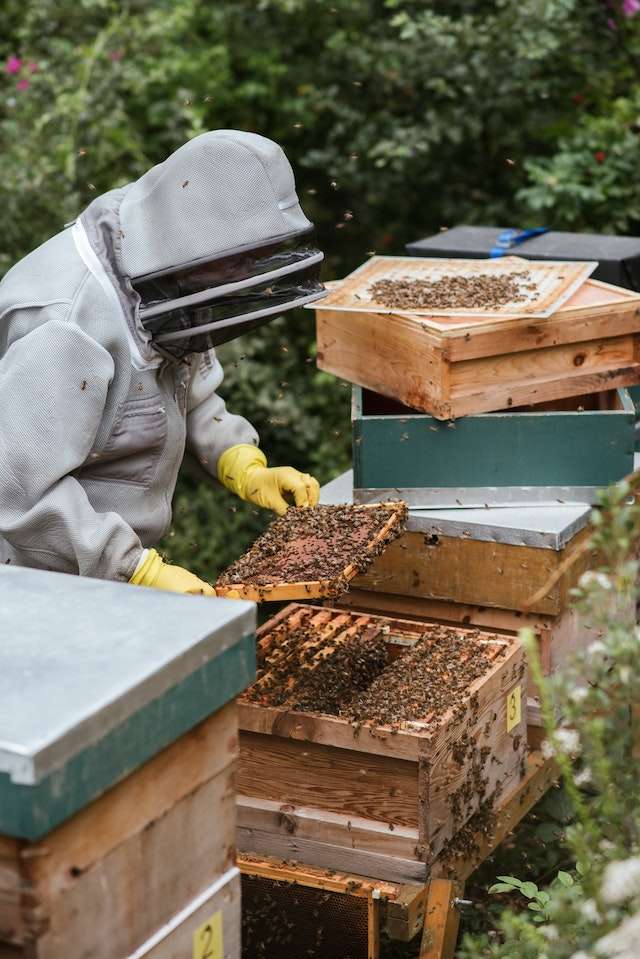
With the advent of beehive monitoring systems, both time and cost efficiency have significantly improved.
- Reducing Manual Hive Check-ups
One of the primary advantages of employing a beehive monitoring system is the reduction of manual hive check-ups. This technology minimizes disruptions to bee colonies by providing real-time data and remote monitoring capabilities.
Beekeepers can now obtain essential information about their hives without physically opening the hive, which reduces stress on the bees, minimizes disturbance, and enables them to function undisturbed within their natural environment.
- Saving Beekeepers’ Time and Effort
By eliminating the need for frequent manual inspections, beehive monitoring systems save beekeepers a significant amount of time and effort. Traditionally, beekeepers would spend hours inspecting individual hives, recording data, and addressing any issues.
With continuous monitoring, information such as hive weight, temperature, humidity, and activity levels can be accessed remotely through a user-friendly interface. This streamlines the beekeeping process and allows beekeepers to allocate their time more effectively.
- Economic Benefits for Commercial Beekeepers
Beyond the time-saving advantages, the economic benefits of utilizing beehive monitoring systems are particularly advantageous for commercial beekeepers.
- Maximizing Productivity and Honey Yield
Beehive monitoring systems enable commercial beekeepers to maximize productivity and honey yield. By precisely monitoring factors such as environmental conditions, nectar flow, and foraging patterns, beekeepers can make informed decisions regarding hive management.
With accurate and real-time data, they can ensure their hives remain in optimal conditions, resulting in healthier and more productive bee colonies. Consequently, this leads to increased honey production, which directly impacts the profitability of commercial beekeeping operations.
- Cutting Down on Labor Costs
Another key economic benefit of implementing beehive monitoring systems is the reduction of labor costs. Instead of relying heavily on labor-intensive manual inspections, beekeepers can deploy monitoring systems that automate data collection.
This not only alleviates the need for additional personnel but also allows existing staff to focus on other essential aspects of beekeeping, such as hive maintenance, disease prevention, and honey extraction. By cutting down on labor costs, beekeepers can optimize their resources and improve their bottom line.
Improved Beekeeper-Bee Communication
Remote Monitoring and Notifications
One of the key advantages of a Beehive Monitoring System is the ability to remotely monitor hive conditions and receive real-time notifications. This feature revolutionizes beekeeping practices by alleviating the need for constant physical inspections, ultimately saving time and effort for beekeepers. Some notable aspects of this system include:
- Mobile App Notifications for Critical Hive Conditions: Beehive Monitoring Systems incorporate mobile applications that alert beekeepers about crucial hive conditions. These notifications are triggered when specific parameters, such as temperature, humidity, or potential swarming incidents, surpass predefined thresholds. With immediate alerts on their smartphones or tablets, beekeepers can swiftly respond to any emergencies, ensuring the safety and well-being of their honeybee colonies.
- Accessing Data and Insights From Anywhere: The remote monitoring capabilities offered by Beehive Monitoring Systems allow beekeepers to access data and gain insights into hive conditions from anywhere, at any time. Whether they are at home, on vacation, or managing multiple apiaries spread across various locations, beekeepers can keep track of their hives effortlessly. This accessibility empowers beekeepers with a comprehensive overview of the entire beekeeping operation, facilitating informed decision-making.
Real-Time Feedback for Beekeepers
Another significant feature of Beehive Monitoring Systems is the provision of real-time feedback to beekeepers. By closely monitoring colony growth and behavior patterns, beekeepers can make timely and well-informed decisions. The advantages of this feedback system includes:
- Monitoring Colony Growth and Behavior Patterns: Beehive Monitoring Systems employ advanced sensors and devices to collect crucial data on colony growth and behavior patterns. By monitoring factors such as brood development, honey production, and overall hive activity, beekeepers gain deep insights into the health and progress of their colonies. This real-time feedback enables them to identify potential issues promptly, allowing for timely interventions to prevent hive losses.
- Enhancing Beekeeper Decision-Making: Armed with comprehensive data and insights, beekeepers can make informed decisions to optimize their beekeeping practices. The real-time feedback provided by the monitoring system helps beekeepers assess the impact of specific management techniques, evaluate the effectiveness of hive manipulations, and adjust their strategies accordingly. Ultimately, this enhances beekeeper decision-making, promoting sustainable practices and preserving the vitality of honeybee colonies.
Considerations before Using a Beehive Monitoring System
Before investing in a beehive monitoring system, there are several crucial factors that beekeepers must consider.
Cost and Affordability
- Evaluating Costs versus Potential Benefits: When considering the purchase of a beehive monitoring system, it is essential to evaluate the costs in relation to the potential benefits it can offer. While these systems can be a significant investment, their ability to provide valuable information and improve honeybee management can outweigh the initial expenses. Consider the long-term advantages such as increased productivity, reduced colony losses, and efficient resource management.
- Budget Considerations for Small-Scale Beekeepers: For small-scale beekeepers with limited resources, budget considerations are crucial. It is recommended to thoroughly research and compare different beehive monitoring systems, evaluating their features and prices. Some systems offer subscription-based plans or initial trial periods, allowing beekeepers to assess the system’s suitability before committing to a long-term investment. Additionally, exploring options for financial assistance or group purchasing with other beekeepers can help reduce costs.
Technical Skills and Compatibility
- Assessing Required Knowledge for System Setup: Before implementing a beehive monitoring system, beekeepers should assess the technical skills required for its setup and operation. These systems usually involve the installation of sensors, data analysis software, and connectivity devices. Familiarity with basic electronics, wireless technologies, and computer proficiency will be advantageous. Online tutorials, user manuals, and customer support provided by manufacturers can also aid in the learning process.
- Compatibility with Existing Beekeeping Practices: Another vital consideration is the compatibility of the chosen beehive monitoring system with existing beekeeping practices. It is important to ensure that the system seamlessly integrates with current hive management techniques and does not disrupt essential routines. Beekeepers should carefully review the functionalities of the system, such as data collection frequency, monitoring range, and ease of data interpretation, to ensure they align with their specific needs and preferences.
Conclusion
There is no denying that sensors can bring real benefits to beekeeping operations. By providing data on the environment and health of the bee colony, sensors enable beekeepers to make timely and informed decisions to keep their bees safe and productive.
From enhanced hive management, to improved contingency planning, and increased bee safety, sensors can be invaluable tools for beekeepers striving to care for their colonies. While sensors may not be necessary for every operation, they can be a valuable addition for beekeepers looking to maximize efficiency and protect their bees.
Frequently Asked Questions about Using a Beehive Monitoring System
What is a beehive monitoring system and why should I consider using one?
- A beehive monitoring system is a technological solution designed to gather important data about the health and status of beehives. It typically includes sensors that monitor factors such as temperature, humidity, weight, and hive activity.
- Utilizing a beehive monitoring system allows beekeepers to gain valuable insights into their colonies, detect potential issues, and make informed management decisions to ensure the well-being of their bees.
How does a beehive monitoring system work?
- A beehive monitoring system includes sensors that are strategically placed within the beehive. These sensors collect data on various environmental parameters and hive activity, which is then transmitted wirelessly to a central hub or your smartphone. Using a dedicated mobile application or software, you can access real-time data, analytics, and proactive alerts about the conditions inside the beehive.
What are the advantages of using a beehive monitoring system?
- By using a beehive monitoring system, you can remotely monitor your beehives and gain insights that were previously difficult or time-consuming to obtain. Some benefits include early detection of issues like swarming or disease outbreaks, optimized hive management strategies, identification of optimal honey harvesting timing, assistance in monitoring hive conditions during extreme weather events, and overall improved beekeeping practices.
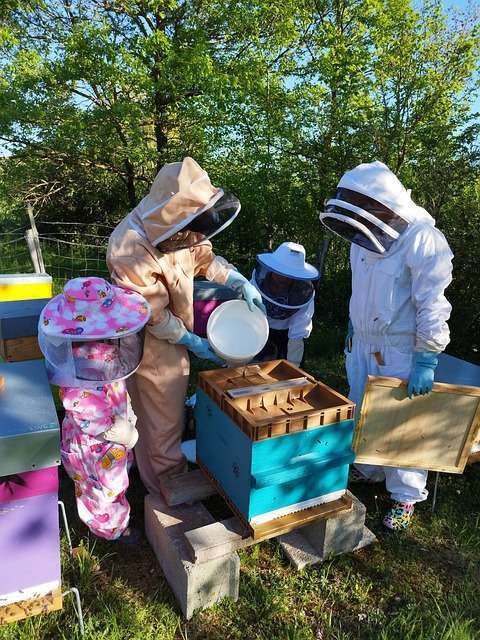
Is a beehive monitoring system suitable for beginners or only experienced beekeepers?
- While a beehive monitoring system can greatly benefit experienced beekeepers who aim for more advanced hive management, it is also suitable for beginners. The system helps beginners get a better understanding of their bees’ activities and environmental conditions, providing important guidance for beginning beekeeping enthusiasts to ensure the well-being of their colonies.
Will I need technical expertise or extensive training to operate a beehive monitoring system?
- No, operating a beehive monitoring system does not require extensive technical expertise or specialized training. Most systems available in the market offer user-friendly interfaces, guiding you through the setup process and providing simple instructions for accessing and interpreting the data. The technology aims to make beekeeping more accessible to everyone, regardless of technical background.
How secure is the data collected by a beehive monitoring system?
- As data security is of utmost importance, reputable beehive monitoring systems prioritize the protection of your data. They employ encryption protocols and follow industry best practices to ensure the confidentiality and integrity of the information collected from your beehives. It is essential to choose a system that prioritizes data security to safeguard your valuable insights.
Can a beehive monitoring system replace regular hive inspections?
- While a beehive monitoring system provides valuable insights, it should not completely replace regular hive inspections. The system serves as an additional tool to enhance your beekeeping practices and provide continuous monitoring.
- Regular inspections, including visual observations and hands-on interventions, are still necessary to thoroughly assess hive health and address specific issues that may be beyond the monitoring system’s capabilities.
Is a beehive monitoring system compatible with different hive types?
- Beehive monitoring systems are designed to be compatible with various hive types, including Langstroth, top-bar hives, and Warré hives. They offer flexible installation options and sensor placements to accommodate different hive configurations. Many systems also provide customizable settings to suit your specific hive type and beekeeping preferences.
Can a beehive monitoring system help in preventing hive losses?
- Yes, a beehive monitoring system can contribute to preventing hive losses by providing early warnings and timely information about potential issues. By monitoring factors such as hive weight, hive activity, and environmental conditions, beekeepers can detect abnormalities that may indicate problems like colony weakness, pest infestations, or unfavorable weather conditions. This allows beekeepers to take immediate action and implement appropriate interventions before significant losses occur.
Are there ongoing costs associated with using a beehive monitoring system?
- While the initial investment in a beehive monitoring system is required, ongoing costs vary depending on the system and chosen service plan. Some systems operate on a subscription basis, offering extended features such as advanced analytics, automatic reports, or additional sensor options. However, many systems provide basic functionality without mandatory subscription fees, ensuring affordability and enabling beekeepers to choose the level of services that align with their needs and budget.
